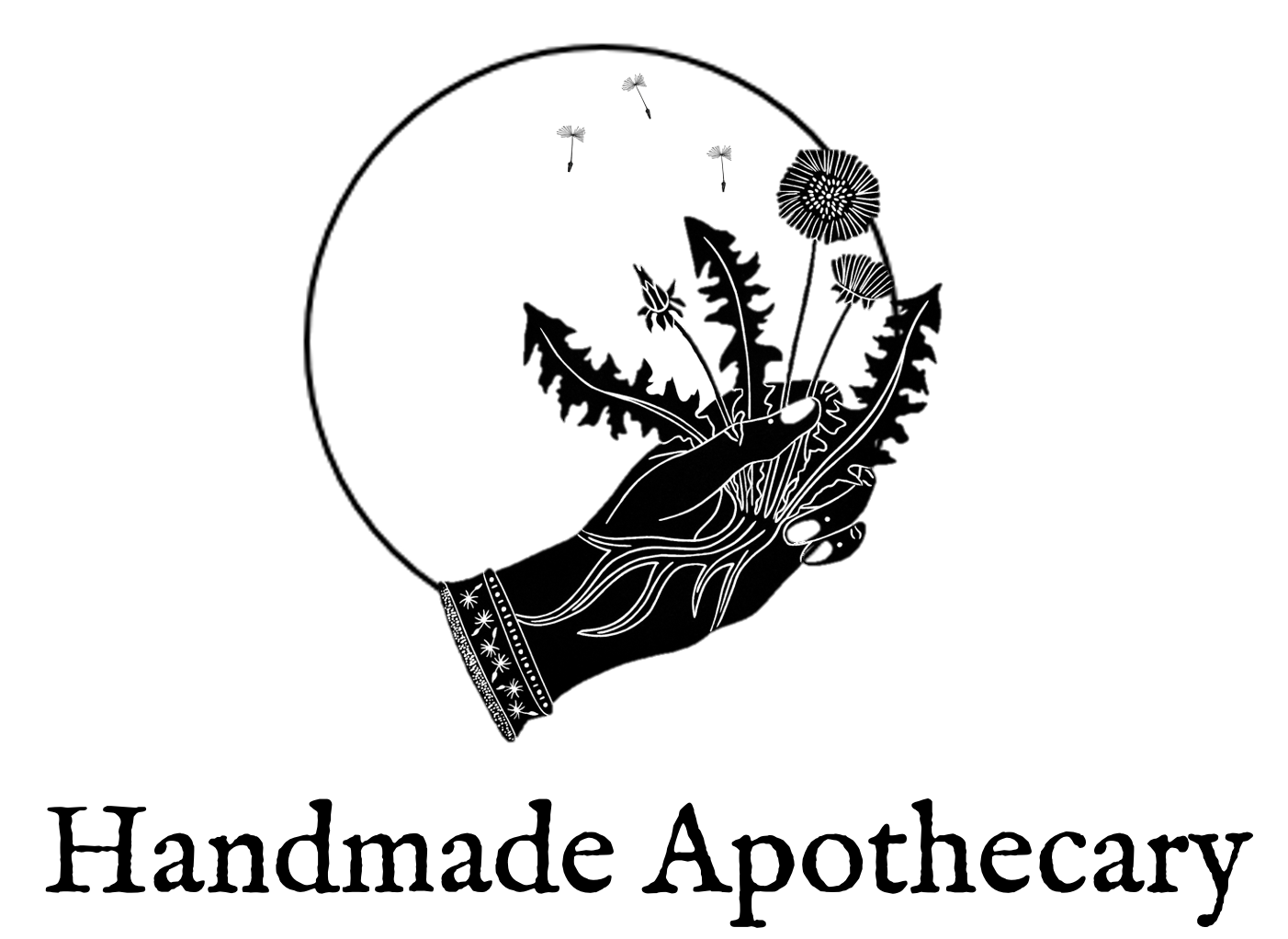Tincture Making: Part 1
What are tinctures?
A set of tinctures ready for mixing into a bespoke remedy. L-R, Calendula, nettle and St. John’s wort. From the Herbal Remedy Handbook. (C) Kyle Books 2019.
Tinctures are herbs extracted into an alcoholic solution. They are created by soaking herbs (officially called the macerate) into an alcoholic liquid (officially called the menstruum).
This is done for a period of time to extract the medicinal properties of the herb into the liquid. They are then strained and the liquid is kept and the herb is discarded.
Why make a tincture?
Because alcohol is a preservative, tinctures are a great way to keep herbs for over a year.
They are also ‘easier’ to take. Instead of taking time to brew up an infusion three times a day, a measure of tincture can be added to cold water and drunk as needed.
Alcohol is also great for extracting a wide range of plant chemicals from that is easy for the body to digest and absorb.
How easy is it?
If you make tinctures professionally, they can become quite complicated if you want to be able to measure the amount of herb in the alcohol. There is a further mathematical ‘How to’ in the next section for those that really want to know.
This is because different compounds found in plants are extracted by using differing ratios of water to alcohol.
For instance, resins are poorly extracted in water but are extracted well in high percentages of alcohol. E.g. Frankincense and myrrh resin (Commiphora spp.) would be extracted in up to 90% alcohol. Tannins and mucilages another chemical are extracted well in lower alcohol percentage such as 30 or 40%.
For the purpose of preserving your own herbs and making your own tinctures at home, the process is very simple.
Your best friend is plain grain alcohol such as a 35%-50% ABV vodka. Vodka is best because it contains no flavour or additional ingredients. However, Sometimes brandy has also been traditionally used.
Is there an alternative to alcohol?
Tinctures contain alcohol. This means that teetotallers, people with alcohol sensitivity, those with liver or kidney conditions and small children can’t always have them.
Instead of tinctures you have options from infusions, decoctions, syrups and pills.
But if you want something similar to a tincture, then use apple cider vinegar or food-grade glycerine to replace the alcohol. In recipes for tinctures, you can replace the alcohol with one of the following:
Apple cider vinegar
Food-grade glycerine. You may need to warm the glycerine to make it runny before pouring over your herbs. If using dried herbs, dampen them with a little hot water before pouring the glycerine over.
These create what are known as herbal vinegars or herbal glycerites. They are essentially tinctures without the alcohol.
How to make a tincture
This section is for tincturing ‘light’ material, such as leaves and flowers. For heavier parts, such as roots, seeds and barks, please see the next section.
Step 1:
Fresh herb (Dried herbs can also be used but we always prefer fresh)
A wide necked jar, mason jars are useful
Vodka (or, apple cider vinegar or glycerine)
Take your herb, chop it up finely and crush a little (either by pounding with the end of a rolling pin or in a pestle and mortar).
This will break the cell membranes of the plant down so the plant constituents can be extracted more effectively.
Place the chopped herbs in a jar, but don't pack it down too tightly: you need plenty of space for the vodka to seep around it.
Put the lid on tightly and shake to mix well.
Label this tincture with:
The common and scientific name of the plant
The part of the plant used
Location foraged
The date
Alcohol used
For example: Thyme tincture, Thymus vulgaris, Leaves and flowers, 01 June 2021, 40% Vodka
Step 2:
Leave the tincture in a cool, dark place for at least a month (one lunar cycle) and gently shake it up a few times a week. This is to encourage more herbal extraction.
Some herbs need more or less time. For example, Melissa is commonly only steeped for 24 hours so as to extract more of the volatile oil compounds and less of the tannins.
Don’t leave your tincture too long as it may affect the final look. Longer steeping can make the final product bitter or produce precipitate (floaty sheen/bits). These are not harmful, but makes the tincture less satisfying.
Step 3:
After a month, strain out your tincture using a fine sieve or a muslin.
Place the strained liquid in a glass bottle. Light can break down tinctures, so best kept in dark glass such as brown, blue or green.
Relabel your tincture. If you don’t, you will forget what it is.
For advanced tincture making, including calculating ABV% click the button below.


